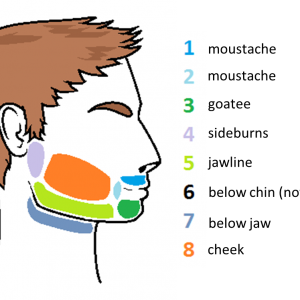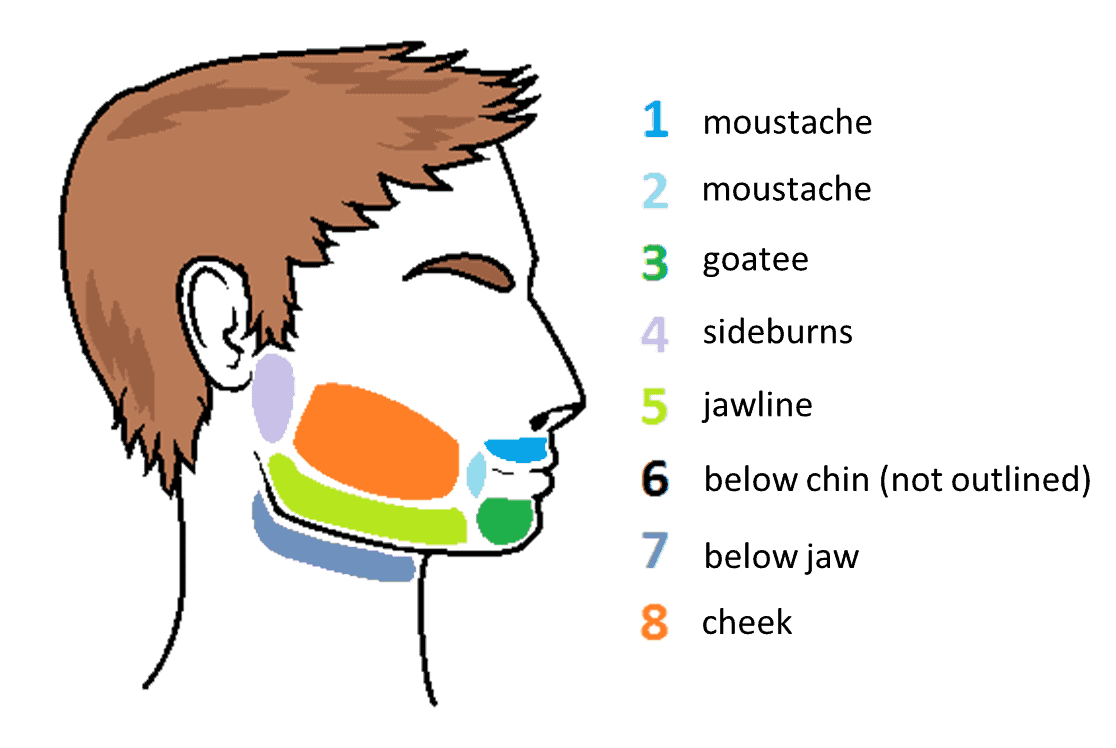
Introduction
People either love or hate beards – it is hard to find someone who stands in the middle! However, it seems that beards are becoming more prevalent, for a variety of reasons. Beards are considered by many individuals, and even by entire cultures, to be a symbol of masculinity. They may also be considered a societal trend as people tend to do what is being done in Hollywood or by those constantly in the media. Thus, many men have moved from a clean cut appearance to sporting full beards. Additional societal and cultural pushes to grow a beard include hipster culture and Movember participation, which is a fundraising campaign to raise awareness for male cancers in which men grow their facial hair for the month of November. Whether it is to change their look or attract attention, beard transplants are on the rise and growing across various demographics. So much so, that beard transplants are one of the most requested hair procedures along with scalp hair and eyebrows. Interestingly enough, beard hair can also be harvested and used to replenish the hair of the head! This blog post will describe how these procedures are accomplished and what patients can expect.
Quick beard facts
Typically, beards begin growing during puberty due to a group of hormones called androgens. The density of hairs continues to increase until about the mid-30s of most men. The hairs themselves are actually triangular in shape compared to the hairs found on the scalp which are more rounded and oval. Additionally, hair density of the beard varies among ethnic groups, with Middle Eastern and Indian men often possessing higher densities. The cheek beard is considered to be most important cosmetically, as are the moustache and the goatee. The hairs on the neck, below the chin and jaw are also a part of the beard, but are not as important cosmetically (1).
Transplanting hairs, here and there
So how do we get hairs from elsewhere on the body into the beard, or vice-versa? Follicular unit excision (FUE) is the increasingly popular technique used in surgical restoration. It leaves behind no linear scars and is suitable for harvesting hairs from various parts of the body, such as the beard, chest, and extremities in harrier individuals (2). Additionally, there can be up to 12,500 hairs or 6000 follicular units (of 2 to 3 hairs) that can be transplanted from the average donor area found on the back of the head. This area also tends not to lose hair due to androgenic alopecia (3). Hair can also be harvested from other parts of the body such as the beard, chest, arms, and legs, to be used as an additional donor hair supply (2). However, the hair on the body is not quite the same as that on the head – it can vary in thickness, length, and hair cycle, so it is important that it is transplanted to appropriate areas.
The most suitable technique for harvesting hair is now considered to be FUE, especially for body hairs. This technique does not require the removal of a large strip of hair along with the skin, but rather uses punches to individually extract the follicle units, one at a time (2). As such, a single patient’s transplant session can last an entire day. The small circular punches heal quickly, within two days (4).
Replenishing the beard with existing hair
Prior to the hair surgery, patients are asked to grow their beard for 3 to 5 days before surgery and on the day of, it is clipped to 2 mm above the skin. Then, the surgeon determines the borders of the donor area – where the hairs will be removed from. By dividing the face into 8 sections (see Figure 1), the surgeon leaves sections 1, 2, and 3 alone (the moustache and goatee) as they are the facial hair most associated with secondary sex characteristics in males (5). Section 4 is also left alone as this corresponds to the sideburns.
Figure 1. Example of facial hair borders demarcated by a surgeon.
The hair in section 8 (cheek hair) is extracted first because these hairs are usually more scattered and not as desirable, regardless of beard style. Thus, removing them creates a more refined look. Finally, sections 6 and 7 (below the chin and jaw) are the next extraction sites, as the amount of beard under the chin does not really affect the patient’s appearance. Once the donor sites are chosen, the anesthetic is applied. A semi-circular needle called the Jack’s Beard Extraction Jewel (JBEJ) is used for beard hair excision and the surgeon must note the direction of the hair growth before inserting the JBEJ below the follicular unit to avoid damaging the follicle. To remove the graft, small curved-handle forceps with broad tips are used. The body of the graft is held by Jack’s Beard Tweezers (JBT) small forceps, which have two tips similar to hands that hold the graft tightly and allow the surgeon to ease the hair and follicle out of the donor site (5). Alternatively, hair can also be transplanted from the mid-occipital area (behind the head) and is actually the preferred donor area for the beard! The hairs in this location are much thicker than the rest of the scalp hair. In these cases, hairs are either extracted by FUE individually, or by the strip harvest method to leave the hair at a longer length (5). The latter allows the surgeon to observe the direction of hair growth better.
Implanting the hair into the recipient site can be a bit more challenging – the beard area tends to be more muscular and thus presents a higher risk of bleeding. To solve this problem, the skin can be stretched by the assistant during implantation (1). Additionally, the implantation process takes longer compared to the scalp, and there is the risk of injuring the superficial nerves, which can cause transient paralysis of some facial muscles. Single haired grafts are placed over the superior outline of the beard, which is similar to what is done with the scalp hairline. Single and two-haired grafts are used to cover the remaining areas of the beard. The two-haired grafts are great for beards because they can easily increase thickness in the area (1,6).
Conclusions
Beard restoration has risen in prominence over the past few years as men aim to change their look. Hair growth normally begins 3 months after the surgery and continues to improve over the following year (1). Although the procedures are often successful, it is important that patients are counseled about it and their expectations managed. For example, maintaining the beard may not be possible for an individual and a clean-shaven look will be more suitable after the transplant.
References
- Poswal A. Expanding needle concept for better extraction of body hair grafts. Indian J Dermatol. 2013 May;58(3):240.













